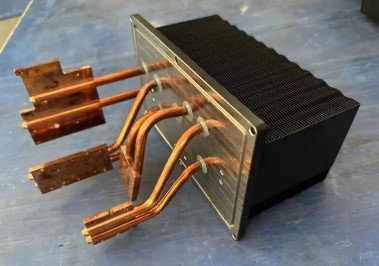Tech
5 Instances to Use a GPS tracker

A GPS tracker is a wonderful device to use. It can tell you the exact location of where a person or item is. For that reason, you may be interested in purchasing a high-tech tracker for yourself. You could have a variety of reasons for wanting to use such a device. These are some of the most common reasons you might want to purchase one and use it:
1. To Monitor Your Workers
A GPS tracking device is an excellent product for you if you’re a business owner as it can help you to keep track of your workers or work vehicles. You can purchase a tracking unit and place it in the work vehicles so that you will know where your employees are at all times. This will let you know whether they are working or going outside of their routes while they’re on the clock. It’s a great way for you to monitor the productivity of your workers and ensure that they are always doing what’s best for the business at all times. The good news is that you can get GPS trackers without eating into your budget too much. You can select one of many plans that will fit your financial needs perfectly.
2. To Stay Up-To-Date With Your Kids
As a parent, you always want to ensure that your children are safe and are involved in fruitful activities. One way you can do that is by investing in a tracking unit. A tracking unit can help you keep track of young children who go to elementary school or older children who might be driving your vehicle every day. You can never be too secure during these difficult times. That’s why it’s great to have a tracker installed at all times. Some of the trackers are so small that your kids will hardly know they’re there. You’ll know they’re always safe, however.
3. To Follow Your Significant Other
The beauty of having a tracker is that you can use it for any reason you feel is necessary. That includes using it to keep track of your spouse or significant other. You may want to know where your partner is spending his or her time. Maybe you just want to ensure that this individual is safe and makes it to the grocery store during dinner runs. Both reasons are acceptable, and you have the right to use a GPS Tracker for them. Think about investing in a tracker for your well-deserved peace of mind.
4. To Get Help in an Emergency
Trackers aren’t just valuable when you need to monitor another person. You may also need one of these devices so that you can get the help you need in an emergency. Sometimes, a few minutes can make a difference in whether someone gets to you in enough time to assist you after an incident. You may want to consider renting or buying a tracker so that you can feel much more confident when you go on road trips. It can even help to ease your mind during your everyday operations. Consider it an extra step you are taking to ensure that you have protection all the time.
5. To Stay in Touch With Your Vehicle
Having a tracker in your car can be a useful thing as well. You will be able to locate your stolen vehicle if you ever experience the unfortunate incident of having it taken from you. You can notify the authorities in enough time to have them rush to the scene immediately to assist you. That’s worth the investment if you want to put a little bit extra into protecting your precious assets.
It’s easy to get started with a reliable GPS tracker. All you need to do is search providers who offer them and then compare models and choose one that seems good for you. You might have a guarantee period during which you can return the item if you’re not happy with it.
Consider Purchasing a Tracking Unit Now
Now is the time to grab hold of a tracker if you need one to improve the quality of your life. You can purchase one through a reliable provider today.
Tech
Complete Guide to Understanding What are Heat Pipes

Wondering what are heat pipes? They are devices designed to move heat efficiently and reliably. Using phase-change technology, heat pipes transfer heat away from important components to prevent overheating and keep devices running smoothly. They are used in everything from laptops, smartphones, industrial machinery, and aerospace systems. This guide will explain how heat pipes work, the different types available, and why they are essential in modern technology.
What Is a Heat Pipe?
A heat pipe is a highly efficient, passive device that moves heat from hot areas to cooler areas using the principle of phase change. It’s widely used in electronics, aerospace, and other high-performance systems to keep components cool and reliable.
Components of a Heat Pipe
- Envelope (Outer Shell)
The envelope is the outer shell of a heat pipe, typically made from thermally conductive metals such as copper or aluminum. It is a sealed, hollow tube that contains the working fluid and internal components, providing structural integrity and enabling efficient heat transfer.
- Working Fluid
Partially fills the heat pipe and evaporates/condenses to transfer heat.
Common fluids:
- Water: up to ~100°C.
- Ammonia: low-temperature applications.
- Methanol/Ethanol: below freezing.
- Mercury/Sodium: high-temperature uses.
- Wick Structure
The wick structure returns condensed liquid from the cooler end to the hot end of the heat pipe using capillary action.
Common Types:
- Sintered metal powder.
- Screen mesh.
- Grooved channels.
- Evaporator Section
Absorbs heat from the source, turning the fluid into vapor.
- Adiabatic (Transport) Section
Vapor moves through this section with minimal heat loss toward the condenser.
- Condenser Section
Vapor releases heat, condenses back into liquid, and transfers heat to the surroundings.
Heat pipes are essentially thermal superhighways, efficiently moving heat while keeping devices cool, quiet, and reliable.
How Do Heat Pipes Work?
Heat pipes transfer heat efficiently using phase change and capillary action.
- Evaporation (Heat Absorption): When one end of the heat pipe is heated, the working fluid inside turns from liquid to vapor. This phase change allows it to absorb a large amount of heat quickly.
- Vapor Transport: The vapor travels through the heat pipe toward the cooler end, carrying the absorbed heat from the hot region to be released at the condenser.
- Condensation (Heat Release): This is the stage in a heat pipe where the vapor releases the absorbed heat at the cooler end and condenses back into liquid, allowing the heat to be transferred out of the system.
- Return of the Liquid: The condensed liquid is drawn back to the hot end by capillary action through the wick structure, ready to repeat the cycle.
The heat pipe works through a continuous cycle of evaporation, vapor transport, condensation, and liquid return. This process allows heat to move rapidly and evenly from hot to cooler areas, making heat pipes highly effective for cooling electronics, aerospace systems, and other high-performance applications.
Types of Heat Pipes
Heat pipes are designed in different ways to handle specific cooling needs in electronics, aerospace, and other high-performance systems. The main types are Standard Heat Pipes, Vapor Chamber Heat Pipes, and Loop Heat Pipes.
-
Standard Heat Pipes
The most common type, known for versatility and reliable performance.
- Applications: Widely used in laptops, gaming PCs, servers, and general electronics.
- Advantages: Simple design, effective heat transfer, and suitable for general-purpose cooling.
-
Vapor Chamber Heat Pipes
Flat, wide heat pipes are designed to spread heat evenly across large surfaces.
- Applications: High-performance computing, LED systems, and other devices where preventing hotspots is essential.
- Advantages: Handles high heat flux, provides uniform temperature distribution, and prevents localized overheating.
-
Loop Heat Pipes
Compact, flexible heat pipes are ideal for space-constrained environments.
- Applications: Aerospace systems, satellites, and advanced electronics where size and weight are essential.
- Advantages: Efficient heat transfer in tight spaces, lightweight, and suitable for high-performance systems in confined areas.
Choosing the right type depends on the application, space constraints, and heat transfer requirements.
Advantages of Heat Pipes
Heat pipes offer several benefits that make them essential for efficient thermal management in modern technology:
- High Thermal Conductivity: Transfers heat much faster than solid metals, ensuring efficient cooling.
- Compact and Lightweight Design: Ideal for space-constrained and portable devices.
- Silent Operation: Function without moving parts, providing noiseless cooling.
- Reliable and Low Maintenance: Sealed construction and passive operation result in long-lasting, trouble-free performance.
- Effective Heat Spreading: Distribute heat evenly and prevent hotspots, protecting sensitive components and improving overall system stability.
Heat pipes combine efficiency, reliability, and compactness, making them a cornerstone of modern cooling solutions.
Heat Pipe Cooling Applications
Heat pipes are flexible and efficient cooling components used across many industries to manage heat and maintain optimal operating temperatures. Their ability to transfer heat quickly makes them essential in systems where overheating could affect performance or safety.
- Electronics Cooling: Heat pipes transfer heat away from CPUs, GPUs, and other high-performance components, keeping devices within safe temperature limits. This enhances performance and extends the lifespan of electronic devices.
- Aerospace and Avionics: Heat pipes regulate temperatures in spacecraft, satellites, and avionics systems, ensuring reliable operation even in extreme space conditions.
- Telecommunications: Heat pipes are used in telecommunications to cool equipment where fans or active cooling aren’t practical. They efficiently manage heat from electronic components, making them ideal for compact or remote installations.
- Automotive Industry: In electric and hybrid vehicles, heat pipes manage battery temperatures, keeping them at optimal levels to ensure consistent performance and extend battery life.
- Renewable Energy Systems: Heat pipes enhance heat transfer in solar panels and other renewable energy devices, helping them maintain steady electricity generation and efficient heating, which improves overall system reliability.
- Medical Equipment: Heat pipes provide precise cooling for devices such as MRI machines and diagnostic tools, ensuring accurate results, safe operation, and reliable performance.
- HVAC Systems: Heat pipes improve energy recovery and temperature control in heating, ventilation, and air conditioning systems, making them more efficient and effective.
- Industrial Cooling: Heat pipes help prevent overheating of machinery and equipment, ensuring they operate smoothly and continuously without interruptions.
- Consumer Appliances: Heat pipes enhance cooling in household devices such as refrigerators and air conditioners, improving their efficiency and performance.
- Computer Servers and Data Centers: Heat pipes help maintain optimal temperatures in server farms and data centers, ensuring reliable operation and high performance even under heavy workloads.
Heat pipes are chosen by type, size, and working fluid to meet specific cooling needs. Their efficiency and reliability make them essential for modern electronics, aerospace, automotive, energy, industrial, and consumer applications.
Conclusion: Understanding Heat Pipes and Their Importance
Heat pipes are efficient cooling devices that use phase-change technology to move heat from hot areas to cooler ones. This prevents overheating and helps devices operate smoothly. They are commonly used in electronics, aerospace, industrial machinery, and renewable energy systems.
By efficiently keeping components cool, heat pipes enhance the reliability, compactness, energy efficiency, and lifespan of modern technology, enabling high-performance operation across many industries.
Tech
From Prompt Engineering to Agent Orchestration: What Companies Need in the Agentic AI Era

The Rise of Agentic AI
Not long ago, getting results from AI was about crafting clever prompts. Today, in the agentic AI era, the game has changed. Businesses are moving from interacting with single models to orchestrating networks of intelligent agents that specialize, collaborate, and execute multi-step workflows with minimal human oversight.
The Agentic AI Revolution
The shift is profound: from “telling AI what to do” to “working with AI teams that decide and act.” Unlike traditional AI tools that wait for instructions, agentic systems can:
Break down high-level goals into actionable steps
Adapt strategies based on feedback or changing conditions
Interact with other agents to divide and conquer tasks
Refine execution until the goal is achieved
Frameworks such as LangChain, AutoGen, and CrewAI have fueled this evolution, enabling orchestration of multiple specialized agents into cohesive, goal-oriented systems. Cloud providers like AWS (Bedrock Agents) and Google Cloud (Vertex AI Extensions) are embedding these capabilities into their platforms, signaling that multi-agent architecture is now enterprise-ready.
From Prompts to Orchestration
Prompt engineering still matters — it builds clarity in goals and constraints. But the new frontier is orchestration: designing, deploying, and managing agent networks that can share context, communicate, and integrate with external APIs, datasets, and enterprise systems.
Instead of chasing the “perfect prompt,” companies are learning to:
Assign specialized roles to different agents
Enable shared memory so agents build on each other’s work
Establish collaboration protocols to coordinate execution
Embed compliance and guardrails directly into workflows
This is not hype. The autonomous AI agent market is forecast to grow from $4.8 billion in 2023 to $28.5 billion by 2028.
The New Agentic AI Skill Stack
To compete in the agentic AI era, teams must master new capabilities.
Key components include:
Advanced prompt engineering – Crafting goal-oriented prompts for multi-agent systems
Multi-agent orchestration – Using frameworks like LangChain, AutoGen, and CrewAI to manage complex workflows
Secure and compliant deployment – Sandboxed environments, data governance, and compliance-first design
Observability and monitoring – Building reliability by tracking outputs, accuracy, and anomalies
Adaptive system design – Creating modular systems that evolve with advancing AI capabilities
The most successful companies will combine human oversight with autonomous execution, building clear workflows for escalation, exception handling, and governance.
The Road Ahead
The next wave of AI will be defined by domain-specific agent ecosystems in high-value industries such as finance, healthcare, manufacturing, and logistics. Analysts expect steep adoption curves. Gartner predicts that by the end of the decade, autonomous agents will manage a significant share of business interactions and process automation.
This will normalize the presence of AI colleagues:
Project manager agents that track deliverables and flag risks
Research agents that surface insights and prepare reports
Strategic agents that propose solutions or negotiate priorities
AI is moving from assistant to embedded team member — one that may soon initiate collaborations and shape decisions. The question for leaders is no longer if this shift will affect them, but how quickly they will adapt.
Final Word
If your AI strategy is still focused only on prompt crafting, you are already behind. The future is orchestration, governance, and integration. The leap from prompt engineering to agent orchestration mirrors every major tech shift: as tools evolve, so must people and processes.
Teams that embrace observability, security, and adaptive design now will unlock AI’s potential at scale. Those who delay risk spending the next decade playing catch-up.
Tech
How Accounting Firms Use Technology To Improve Financial Management

You face challenges in managing finances, but technology in accounting brings solutions. Accounting firms now embrace new tools to support you better. These tools streamline your financial tasks, making them more efficient and less stressful. For example, your needs might include bookkeeping in Plymouth. You can now rely on software that simplifies and tracks every transaction. This use of technology ensures accuracy and saves time. You also benefit from real-time updates, giving you a clear picture of your financial health. When technology automates routine tasks, accountants devote more time to strategic advice. You gain insights into financial trends, helping you make informed decisions. As technology transforms financial management, you experience a smoother journey toward financial stability. Understanding how these tools benefit you is key. With technology guiding the way, your financial world becomes more manageable, and your future brighter.
Automation Cuts Down Errors
You see fewer errors in financial records as technology takes the reins. Automated systems handle repetitive tasks like data entry. This reduces the chance of human mistakes. By minimizing errors, you trust the financial reports you receive. Reliable data leads to better decision-making. Accounting software catches inconsistencies early, allowing for quick corrections. This proactive approach keeps your financial health intact.
Cloud Technology Enhances Accessibility
Cloud technology opens doors to convenience and accessibility. You access your financial data anywhere with an internet connection. This flexibility helps you stay informed even when you’re on the move. Security measures in cloud systems protect your sensitive information. You benefit from regular updates and backups, ensuring data safety. With these advancements, you manage finances without disruption.
For more insights into cloud technology’s impact, explore resources from the National Institute of Standards and Technology (NIST).
Data Analytics Provide Insights
Data analytics brings a new level of understanding to your finances. You see patterns and trends that might go unnoticed otherwise. With these insights, you plan more effectively. Accounting firms use analytics to offer tailored advice based on your financial behavior. This personalized guidance helps you allocate resources wisely and achieve financial goals.
Comparison of Traditional vs. Tech-Driven Accounting
| Aspect | Traditional Accounting | Tech-Driven Accounting |
|---|---|---|
| Data Entry | Manual, Time-Consuming | Automated, Quick |
| Error Rate | Higher | Lower |
| Access to Data | Limited, In-Person | Remote, Real-Time |
| Insights | Basic | Advanced, Data-Driven |
Cybersecurity Ensures Safety
You worry about data security, but advanced cybersecurity measures ease these concerns. Accounting firms use encryption and secure servers to protect your information. Cybersecurity protocols reduce the risk of breaches. Regular audits and updates maintain system integrity. As a result, you trust that your financial data remains confidential and secure.
Integration with Other Tools
Technology enables seamless integration with other financial tools. You connect accounting software with payroll systems, tax software, and more. This synchronization improves efficiency and ensures consistency across platforms. It eliminates redundant tasks and enhances your overall experience. You handle various aspects of financial management through a unified interface.
Future Trends to Watch
Stay informed about future trends in accounting technology. Artificial intelligence and machine learning continue to enhance financial management. These tools predict outcomes and automate more complex tasks. Blockchain technology offers secure transaction recording. Adapting to these trends early provides you with a competitive edge.
For more on emerging trends, consider information from the U.S. Department of Education.
Conclusion
Technology reshapes the way you manage finances. Accounting firms use these advancements to provide better service. Automation, cloud technology, and data analytics work together to enhance accuracy and accessibility. Cybersecurity measures protect your information, while integration with other tools streamlines processes. Staying aware of future trends keeps you ahead. Embrace these changes to enjoy a more manageable and secure financial journey.
-

 News1 week ago
News1 week ago3 Benefits Of Choosing One Animal Clinic For Multi Pet Homes
-

 Fashion1 week ago
Fashion1 week agoHow Luxury Car Rentals Transform Ordinary Trips into Extraordinary Experiences
-

 Health1 week ago
Health1 week ago5 Benefits Of Regular Follow Ups During Orthodontic Care
-

 Health1 week ago
Health1 week agoThe Role Of Preventive Dentistry In Avoiding Complex Procedures
-

 Travel2 days ago
Travel2 days agoeSIM Revolution: Staying Connected Across Middle East and Asia Without Breaking the Bank
-

 Health2 days ago
Health2 days agoTeaching Kids Good Oral Hygiene With Family Dental Support
-
All5 days ago
Mega888 Malaysia: The Psychology Behind Winning and Responsible Play
-

 Health2 days ago
Health2 days agoWhy Dental Cleanings Are Essential At Animal Clinics



